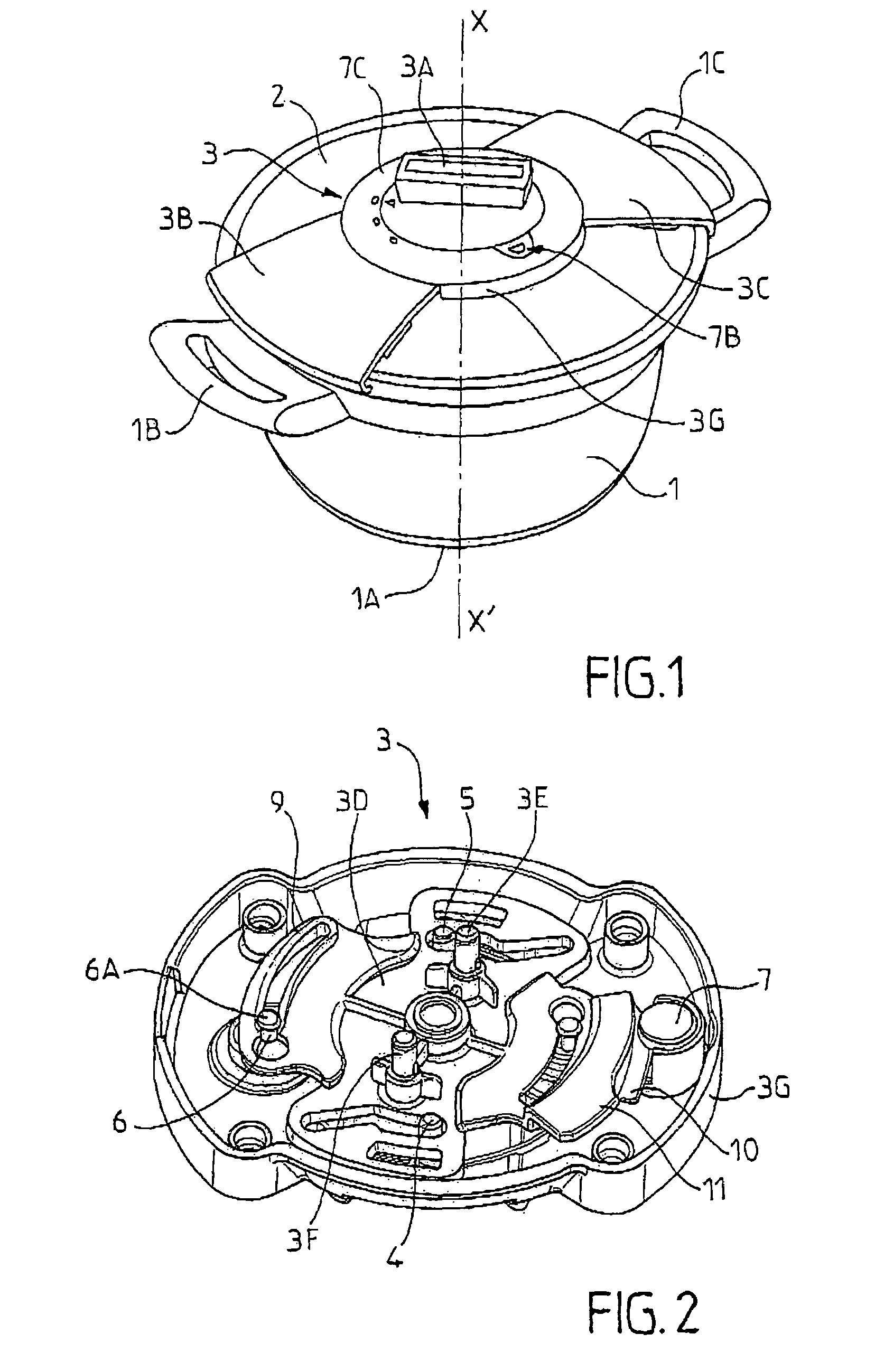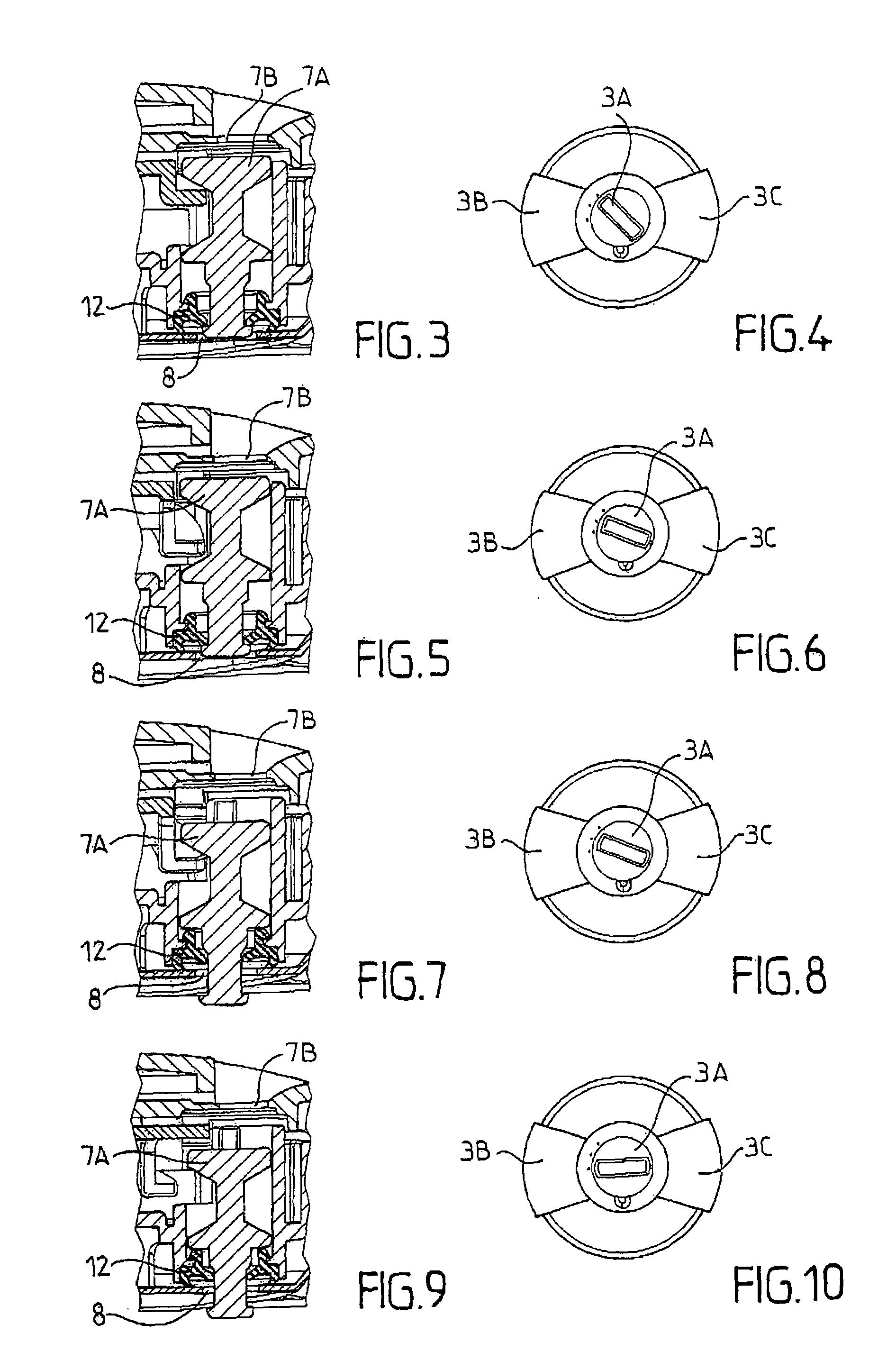Appliance for cooking food under pressure
a technology for cooking food and pressure cookers, applied in the field of applications for cooking food under pressure, can solve the problems of putting constraints on the user concerning the way cooking is done, injuring the user more or less severely, and the user is not able to open the lid of conventional pressure cookers while cooking, etc., to achieve excellent compromise in cooking speed and decompression speed, and the effect of relatively easy and fast opening
- Summary
- Abstract
- Description
- Claims
- Application Information
AI Technical Summary
Benefits of technology
Problems solved by technology
Method used
Image
Examples
Embodiment Construction
[0044]The cooking appliance in accordance with the invention is for cooking various kinds of food under pressure in a household context. The cooking appliance to which the invention applies is thus intended for use in a family setting, and is therefore portable, unlike an industrial appliance.
[0045]In conventional manner, the cooking appliance in accordance with the invention comprises a bowl 1 forming a cooking receptacle that is preferably substantially circularly symmetrical about an axis X-X′. Below, the adjective “axial” is used to refer to the direction of said axis of symmetry X-X′, which direction is close to vertical when the appliance is in normal operation.
[0046]In conventional manner, the bowl 1 is made from a metal such as stainless steel, and it is provided with a heat-conducting bottom 1A that is secured to the bowl 1, e.g. by hot stamping.
[0047]The bowl 1 may also have members for grasping, such as handles 1B and 1C, which are preferably two in number and are fastene...
PUM
 Login to View More
Login to View More Abstract
Description
Claims
Application Information
 Login to View More
Login to View More - R&D
- Intellectual Property
- Life Sciences
- Materials
- Tech Scout
- Unparalleled Data Quality
- Higher Quality Content
- 60% Fewer Hallucinations
Browse by: Latest US Patents, China's latest patents, Technical Efficacy Thesaurus, Application Domain, Technology Topic, Popular Technical Reports.
© 2025 PatSnap. All rights reserved.Legal|Privacy policy|Modern Slavery Act Transparency Statement|Sitemap|About US| Contact US: help@patsnap.com



